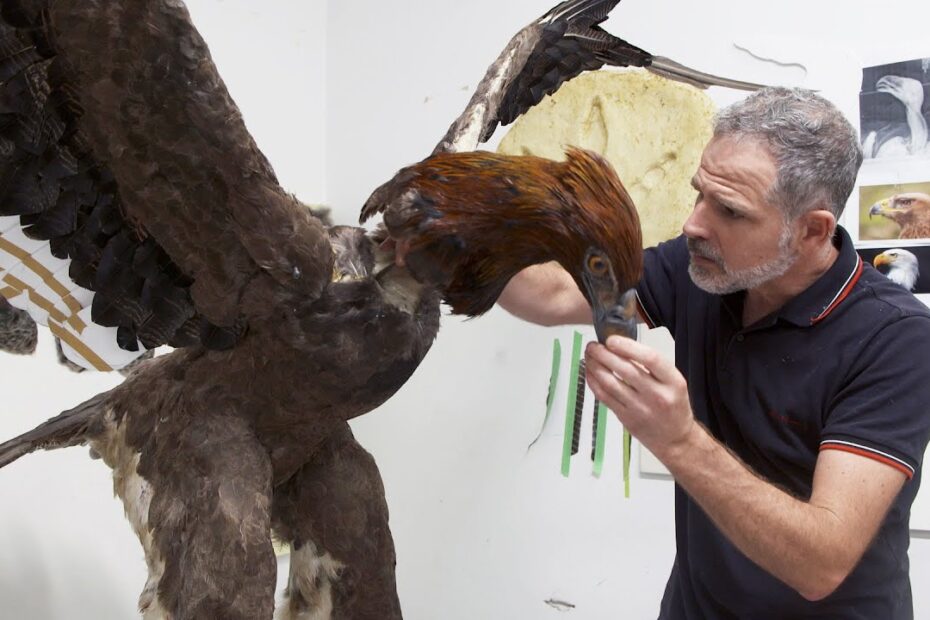The term “deadliest extinct animal” evokes a sense of mystery and intrigue, prompting us to delve into the annals of Earth’s history to unearth creatures that once ruled the ancient landscapes. While the concept of deadliness in animals is multifaceted, encompassing factors such as size, weaponry, and predatory prowess, singling out the ultimate deadliest extinct animal requires a nuanced exploration of the prehistoric past.
1. Tyrannosaurus rex
In the vast tapestry of extinct creatures, one standout contender for the title of the deadliest extinct animal is the fearsome Tyrannosaurus rex. The very mention of T. rex conjures images of a colossal predator with razor-sharp teeth and powerful limbs, dominating the Late Cretaceous period around 68 to 66 million years ago. This apex predator, with its colossal size and formidable arsenal of weaponry, earns its place as a symbol of prehistoric terror.
The anatomy of the Tyrannosaurus rex is a testament to its formidable nature. With an estimated length of up to 40 feet and a towering height of 15 feet at the hips, this dinosaur was an imposing force on the prehistoric stage. Its massive head, equipped with serrated teeth measuring up to 12 inches in length, exemplified the very definition of a carnivorous powerhouse. The jaws of T. rex could exert a bone-crushing bite force, estimated to be around 8,000 pounds per square inch, making it one of the most powerful biters in the history of life on Earth.
The image of the Tyrannosaurus rex as a relentless predator is further amplified by its keen sense of smell and binocular vision. These adaptations endowed it with exceptional hunting capabilities, allowing it to detect prey from great distances and make precise, calculated strikes. Its powerful hind limbs enabled rapid pursuit, while the small, seemingly vestigial arms, often a subject of curiosity and speculation, likely played a role in gripping and stabilizing prey during the feeding process.
While the Tyrannosaurus rex is undoubtedly an icon of prehistoric lethality, it is important to acknowledge that deadliness in the natural world is not solely determined by predatory capabilities. Other extinct creatures, such as the ancient marine predator Megalodon, also make a compelling case for the title of the deadliest extinct animal. Megalodon, a colossal shark that patrolled the oceans approximately 23 to 3.6 million years ago, was a true leviathan of the deep.
Megalodon’s sheer size is staggering; estimates suggest that it could reach lengths of up to 82 feet or more. Its enormous, serrated teeth, some exceeding seven inches in length, are indicative of a predator adapted for preying on large marine mammals. With a bite force potentially surpassing that of the Tyrannosaurus rex, Megalodon was a dominant force in the ancient seas, instilling fear in any creature that crossed its path.
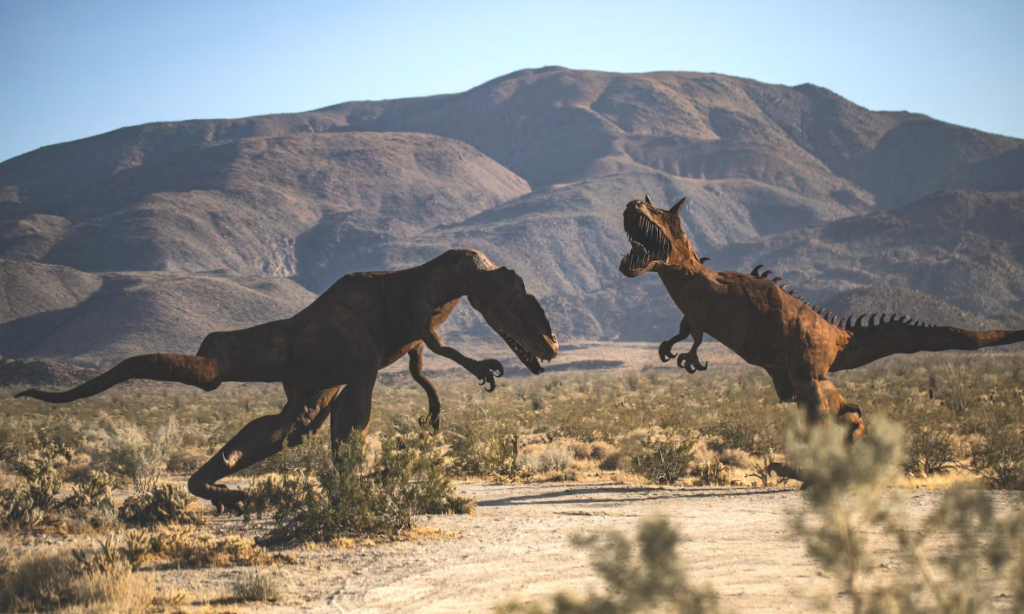
2. Mosasaurus
The oceanic realm also harbored other contenders for the title of the deadliest extinct animal. The Mosasaurus, a marine reptile that lived during the Late Cretaceous period, was an apex predator of the seas. With a streamlined body, powerful jaws, and a length of up to 56 feet, Mosasaurus was a formidable hunter, preying on fish, sea turtles, and even other marine reptiles. Its adaptability and efficient locomotion in aquatic environments contributed to its success as a top-tier predator.
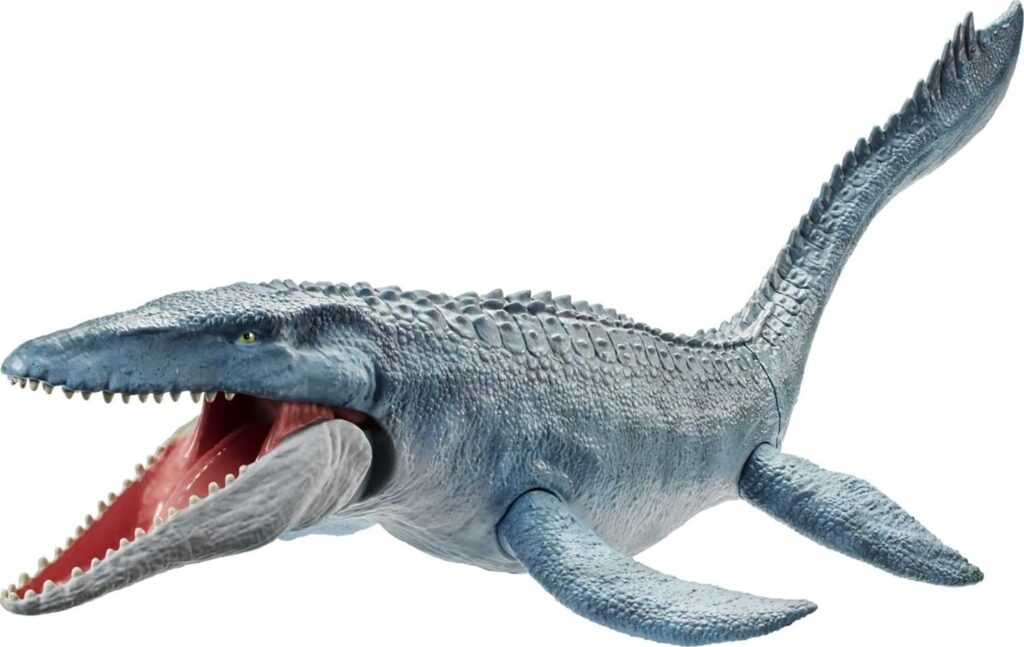
Image Courtesy: https://www.ubuy.co.in/product/3OF57TRHS-jurassic-world-fallen-kingdom-real-feel-skin-mosasaurus-figure
3. Haast’s eagle
In the realm of avian predators, the Haast’s eagle, native to New Zealand, stands out as a formidable and now-deadliest extinct animal aerial predator. With a wingspan that could exceed 10 feet, Haast’s eagle was the largest eagle known to have existed. It preyed upon the flightless moa, a massive, herbivorous bird native to New Zealand. The combination of size, strength, and predatory specialization made Haast’s eagle a lethal force in the island ecosystem.
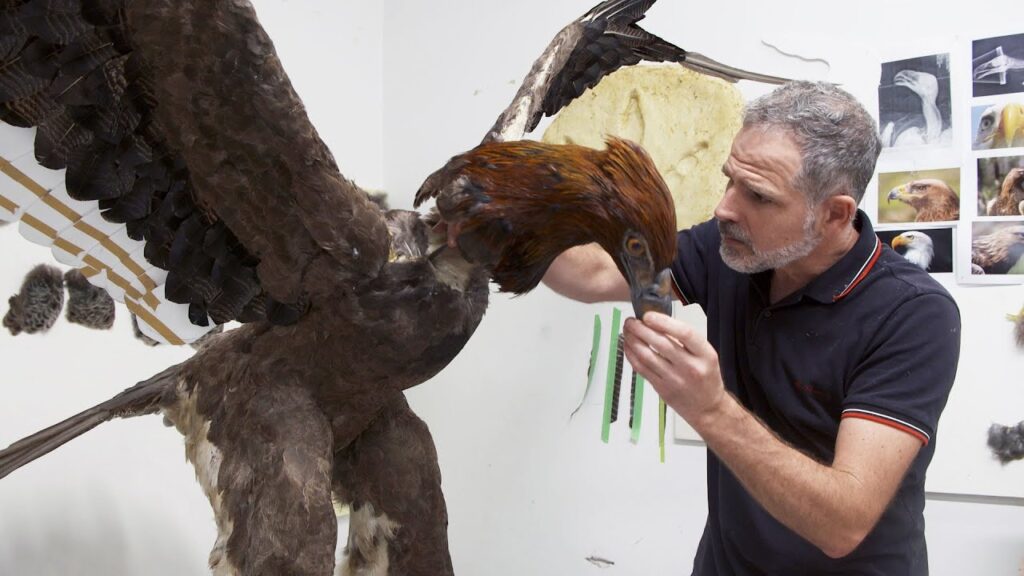
Image Courtesy: https://www.youtube.com/watch?v=cztaJKNaMvo
4. Smilodon
The Smilodon, often colloquially referred to as the saber-toothed cat, is another contender for the title of the deadliest extinct animal. Despite its feline appearance, Smilodon was not a true cat but rather a member of the extinct machairodont subfamily. Its most distinctive feature was the elongated canine teeth, which could measure up to 11 inches in length. Smilodon inhabited various regions of North and South America during the Pleistocene epoch, preying on large herbivores such as bison and camels.
The exploration of extinct animals and their deadliness also extends to the insect world. The ancient arachnid known as the Jaekelopterus, a giant sea scorpion that lived around 390 million years ago, was a formidable predator in aquatic environments. With an estimated length of up to eight feet, Jaekelopterus was a true Goliath of the Paleozoic seas, preying on fish and other marine organisms.
While the aforementioned examples highlight the diverse forms of deadliness in extinct animals, the title of the deadliest extinct animal ultimately depends on the criteria used for evaluation. Factors such as size, predatory specialization, environmental adaptability, and ecological impact all contribute to the overall assessment of deadliness.
In the context of terrestrial predators, the Tyrannosaurus rex stands out as an iconic symbol of prehistoric terror. Its colossal size, powerful bite, keen senses, and adaptability in various environments make it a formidable contender for the title of the deadliest extinct animal. The image of a massive T. rex stalking its prey through ancient landscapes is ingrained in popular culture, reinforcing its status as the quintessential apex predator of the Mesozoic era.
However, in the vast expanses of the oceans, the Megalodon emerges as a rival for the title of the deadliest extinct animal. Its dominance as a marine predator, coupled with its colossal size and formidable dentition, establishes Megalodon as a force to be reckoned with in the ancient seas. The sheer terror inspired by the idea of a massive shark patrolling the ocean depths contributes to Megalodon’s mystique as a deadly predator.
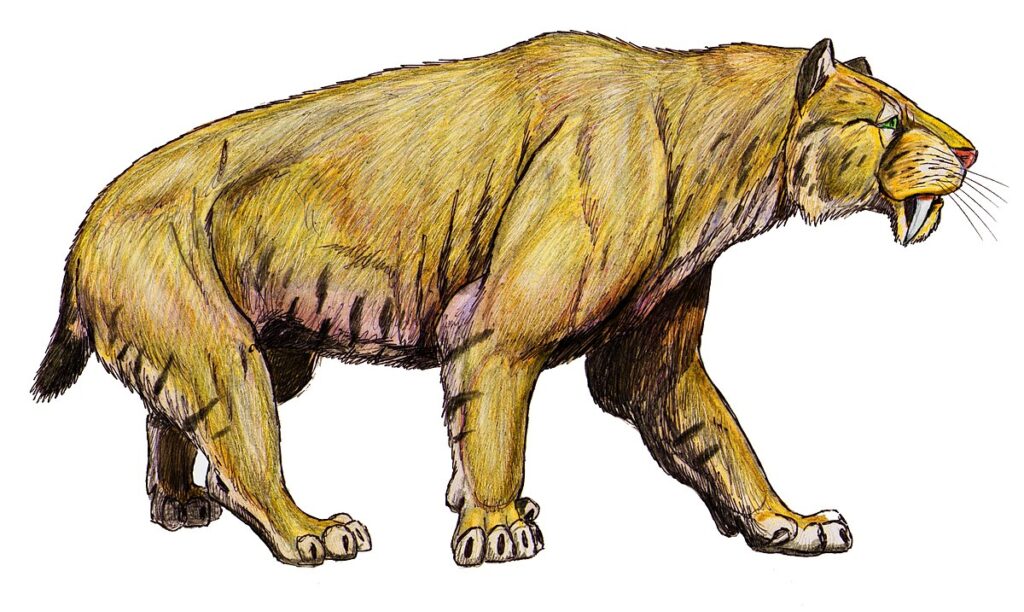
Image Courtesy: https://en.wikipedia.org/wiki/Smilodontini
In contrast, the Mosasaurus, with its adaptability and efficiency in aquatic environments, showcases the diversity of deadliness in extinct animals. As a marine reptile, Mosasaurus occupied a niche parallel to that of sharks and displayed a unique set of adaptations for preying on a variety of marine organisms. Its streamlined body and powerful jaws exemplify the evolutionary innovations that contributed to its success as a top-tier predator in the Cretaceous oceans.
The aerial realm, too, has its share of deadly contenders, with Haast’s eagle showcasing the prowess of avian predators. Its impressive size and specialization in hunting the flightless moa underscore the diversity of predatory strategies employed by extinct animals. The idea of a massive eagle ruling the skies evokes a sense of awe and fear, highlighting the multifaceted nature of deadliness in the natural world.
The saber-toothed cat, Smilodon, introduces a different dimension of deadliness, focusing on adaptations for preying on large herbivores. The elongated canine teeth, capable of delivering precise and lethal bites, exemplify a unique approach to hunting. Smilodon’s presence in various ecosystems of the Americas during the Pleistocene epoch adds a layer of complexity to the discussion of extinct predators.
Even the ancient sea scorpion, Jaekelopterus, challenges preconceptions about deadliness by showcasing the potency of arachnids in aquatic environments. While commonly associated with terrestrial habitats, this giant sea scorpion underscores the adaptability of arachnids and their capacity to exploit diverse ecological niches.
As we reflect on these examples, it becomes evident that deadliness in extinct animals is a multifaceted concept that transcends specific criteria. Each contender for the title of the deadliest extinct animal represents a unique adaptation to its environment and a distinctive approach to predation. Whether through massive size, powerful weaponry, or specialized hunting strategies, these creatures left an indelible mark on the ecosystems they inhabited.
FAQs
1. What is the deadliest extinct animal?
The title of the deadliest extinct animal is often awarded to the Tyrannosaurus rex. This colossal carnivore, which roamed the Earth during the Late Cretaceous period, possessed powerful jaws filled with serrated teeth capable of crushing bones. With an estimated bite force of 12,800 pounds, the T. rex was a formidable predator.
2. How did the T. rex hunt?
Despite its small, seemingly useless arms, the T. rex was an apex predator that likely relied on its massive hind limbs for speed and agility. It pursued prey, such as herbivorous dinosaurs, and used its jaw strength to deliver fatal bites.
3. Were there other deadly extinct animals?
Yes, several others vied for the title. The Spinosaurus, a massive aquatic dinosaur with a crocodile-like snout, and the Smilodon (saber-toothed cat) were also formidable predators. Each had unique adaptations for hunting and survival in their respective ecosystems.
4. What made the Megalodon lethal?
The Megalodon, the largest shark to ever exist, was a lethal marine predator. With its enormous size (up to 82 feet), powerful bite force, and serrated teeth, it hunted marine mammals like whales. The Megalodon’s extinction is still debated, with factors such as climate change and competition for resources considered.
5. Could any extinct animals pose a threat if alive today?
While extinction means these creatures no longer exist, imagining them in the present raises intriguing questions. The T. rex, with its massive size and predatory nature, would undoubtedly be a threat. However, the changed ecological landscape and the presence of modern predators might alter their impact on today’s ecosystems.
In conclusion, the exploration of the deadliest extinct animal leads us on a captivating journey through the annals of Earth’s history. The Tyrannosaurus rex, Megalodon, Mosasaurus, Haast’s eagle, Smilodon, and Jaekelopterus—all contribute to the rich tapestry of prehistoric life, each embodying a different facet of deadliness. The diversity of forms and strategies employed by these extinct animals highlights the complex interplay between predators and their environments throughout geological time. While the title of the deadliest extinct animal may remain elusive, the stories of these ancient creatures continue to captivate our imaginations, reminding us of the dynamic and ever-evolving nature of life on Earth.
Featured image courtesy: https://www.youtube.com/watch?v=cztaJKNaMvo
